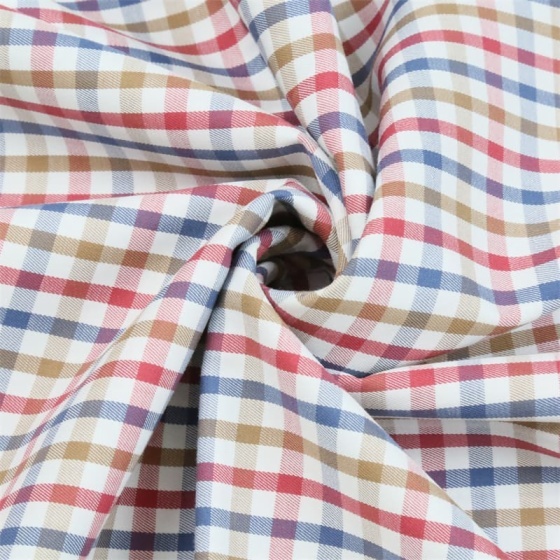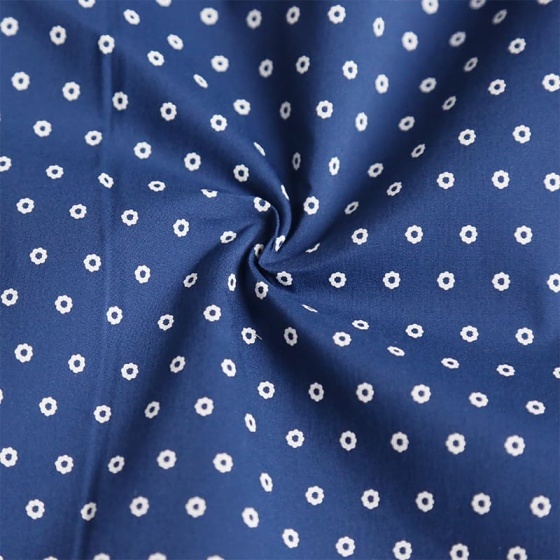Understanding Cotton Dyed Fabric: A Comprehensive Guide for Industry Professionals
Jul 08,2025
One of the primary advantages of cotton dyed fabric is its breathability. Cotton fibers are known for their moisture-absorbing capabilities, which make them comfortable to wear in various climates. This feature is especially important in the fashion and home textile industries, where consumer comfort is paramount. Additionally, cotton dyed fabric can be easily dyed in a wide spectrum of colors, allowing for creative flexibility in design.
The dyeing process itself can vary significantly depending on the desired outcome. Reactive dyeing is a popular method used for cotton fabrics, as it creates vibrant, long-lasting colors that are resistant to fading. This process involves a chemical reaction between the dye and the fiber, ensuring that the color adheres effectively. Other methods include direct dyeing, vat dyeing, and pigment dyeing, each with its own set of techniques and applications.
Sustainability is another critical factor in the production of cotton dyed fabric. As the demand for eco-friendly textiles grows, many manufacturers are exploring organic cotton options and sustainable dyeing practices. Using natural dyes, minimizing water usage, and implementing waste management strategies are becoming standard practices in the industry. This shift not only meets consumer demands for greener products but also contributes to the overall health of the planet.
Another important aspect to consider is the finishing of cotton dyed fabric. After dyeing, the fabric may undergo various finishing processes such as mercerization, which enhances its strength and luster. These finishing techniques can significantly impact the fabric's final appearance and performance, adding value to the end product.
When sourcing cotton dyed fabric, professionals should pay attention to factors such as the weight, weave, and colorfastness of the material. These characteristics can influence the fabric's suitability for specific applications, whether it be for apparel, home furnishings, or industrial uses.
In conclusion, cotton dyed fabric is a multifaceted material that offers numerous benefits and opportunities within the textile industry. By understanding the dyeing processes, sustainability considerations, and finishing techniques, professionals can make informed decisions that enhance their product offerings and meet market demands. Embracing these insights will not only elevate the quality of cotton dyed fabrics but also contribute to a more sustainable future in textiles.
More Events
Understanding Cotton Dyed Fabric: A Comprehensive Guide to Textile Dyeing
Cotton dyed fabric is a cornerstone in the textile industry, especially within the realm of dyeing and weaving. The process of dyeing cotton fabric involves applying colorants to cotton fibers, resulting in a wide variety of hues and patterns that enhance the fabric's aesthetic appeal. This technique not only elevates the visual qualities of the fabric but also plays a crucial role in the overall
Dec 05,2025
How to Effectively Market Products Made from Printed Cloth Fabric: A Comprehensive Guide
How to Effectively Market Products Made from Printed Cloth Fabric Table of Contents 1. Introduction to Printed Cloth Fabric Marketing 2. Understanding Your Target Audience 3. Crafting a Unique Selling Proposition (USP) 4. Utilizing Social Media Platforms for Promotion 4.1 Building a Strong Brand Presence 4.2 Engaging Content Creation 5. Leveraging Influencer Collaborations 6. Implementing SEO Stra
Dec 04,2025
Quality Linen Denim Fabric Supplier Supports Modern Apparel
In the fashion industry, the search for materials that offer both aesthetic appeal and practical comfort is ongoing. A blend like linen denim addresses this demand by combining the classic, durable look of denim with the natural, breathable properties of linen. For designers and clothing brands, working with a reliable quality linen denim fabric supplier is key to creating garments that meet the expectations of today's consumers.
Dec 03,2025
Do Not Heasite To Contact W&S, Your Comprehensive Solution Provider Now!
We like produce phone cases but we more like to see you earn lots of money by working with us.
Quick Link
Garment
Copyright © Nantong Wang and sheng Textile Co., Ltd. All Right Reserved.

Whatsapp: 8615996649800
Looking forward to your call
Tel: +86-15996649800
Looking forward to your call
Email: Nick.wang@ntwangsheng.com
Looking forward to your letter





